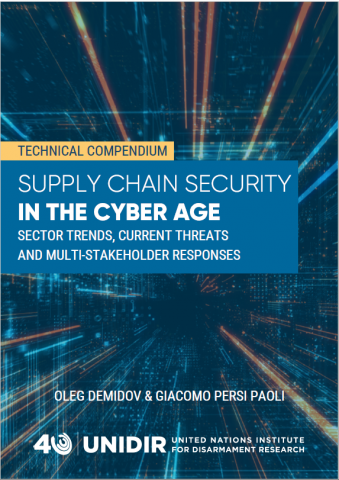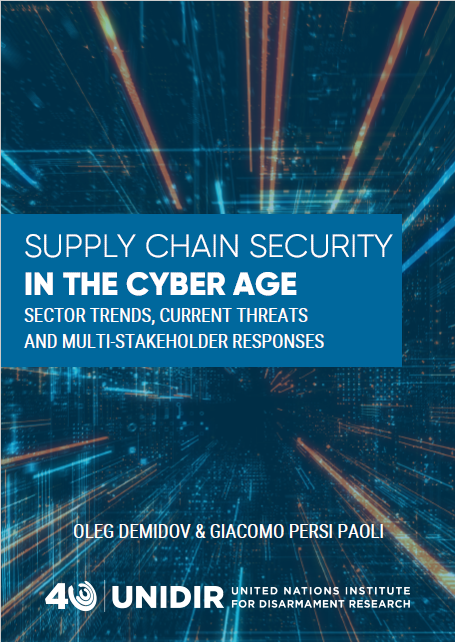A supply chain is traditionally understood as a system of organizations, people, technology, activities, information and resources involved in moving a product or service from supplier (producer) to customer. Today, with the advent of global digital transformation, supply chains and the ways they are managed are transforming, with increasing risks and threats to their security and integrity.
These trends highlight the increasing need for internationally shared, adoptable and scalable solutions that could reverse or tamp down cyber threats to supply chains through cooperative efforts of governments, industry, the technology community and other stakeholders. Supply chain security is one of the key issues in multilateral norm development processes related to information and communications technology (ICT), and it continues to be a main point of discussion under two new multilateral cyber processes launched in 2018 under the auspices of the United Nations General Assembly: a new United Nations Group of Governmental Experts (GGE) and an Open-ended Working Group (OEWG) focused on developments in the field of ICT in the context of international security.
This report aims to assess how normative responses to ICT-related challenges to supply chain security could be further advanced and operationalized. As norms reflect shared expectations, or standards, of appropriate behaviour, identifying opportunities for improving their operationalization requires looking beyond norms themselves and contextualizing them in the wider ecosystem of responses to supply chain security challenges to identify gaps and areas for improvement.
Citation: Oleg Demidov and Giacomo Persi Paoli (2020) "Supply Chain Security in the Cyber Age: Sector Trends, Current Threats and Multi-Stakeholder Responses", UNIDIR, Geneva.
TRANSLATIONS
• Arabic: أمن سلسلة التوريد في عصر الإنترنت
TECHNICAL COMPENDIUM

This publication is a technical compendium to UNIDIR’s report Supply Chain Security in the Cyber Age: Sector Trends, Current Threats and Multi-Stakeholder Responses. The compendium is supplementary to the report and provides more detailed information and case-based analysis related to the report’s major sections in a number of annexes.
To read the technical compendium click here.
